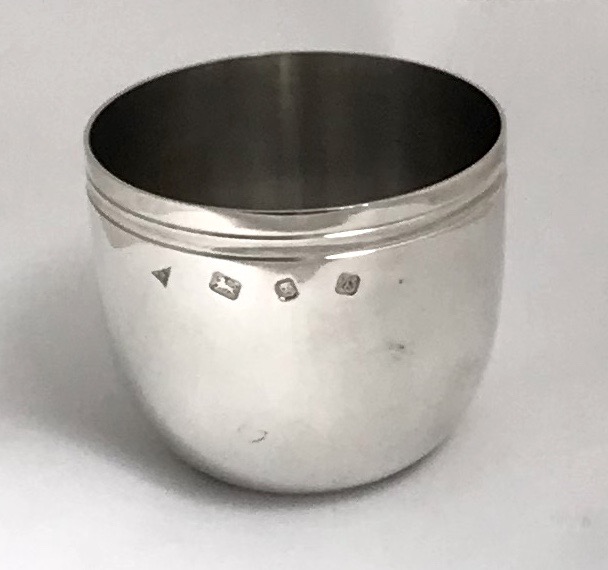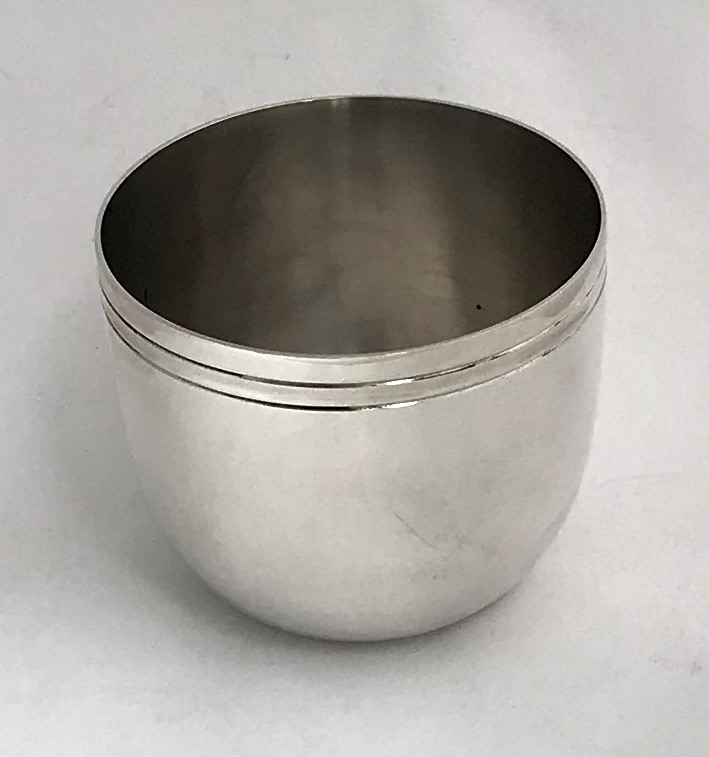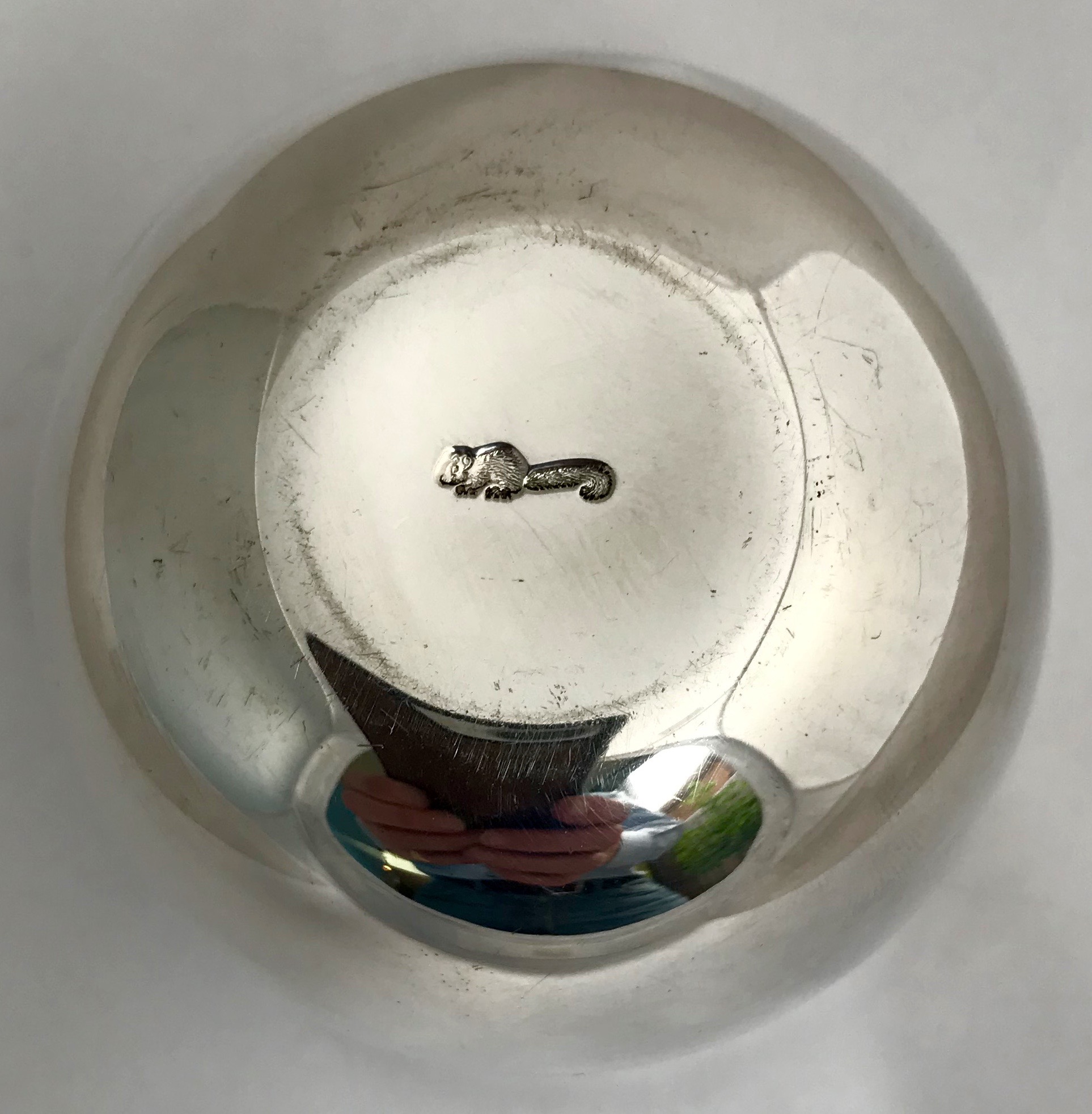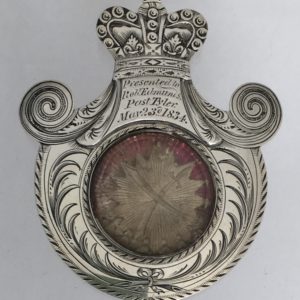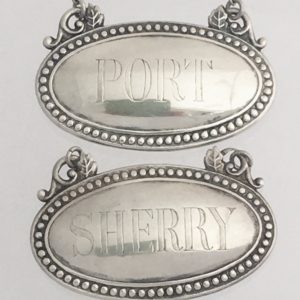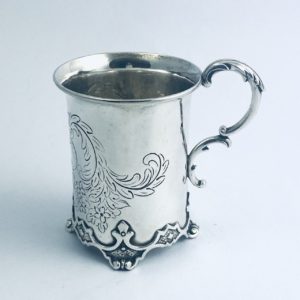Description
A heavy, good quality, circular sterling silver tumbler cup of simple form, with two lines of reeding and a depressed ring between them, just below the top edge, for both decoration and practicality. The cup is otherwise undecorated on the outside and interior. The base is slightly flattened and concave to give stability.
Hallmarks:
On side below the rim: Maker’s mark of ‘BLF’ in an inverted triangle with engrailed sides for Brian Leslie Fuller (see more below); Lion Passant (Sterling); Leopard’s Head (London); and upper case modern script ‘W’ (1996).
On base: the cup carries Fuller’s trademark of an impressed Glis glis (dormouse).
Dimensions & Weight:
Height: 6.5 cm / 2 ½ ins. Diameter (at lip): 7.5 cm / 3 ins. Diameter (base): 3 cm / 1 ¼ ins. Weight: 162 gms / 5.2 ozT.
Brian Leslie Fuller
Brian Fuller was born at Diss, Norfolk in 1942. Aged 14 and studying at a college in Croydon with the aim of going into commerce, he heard a radio talk about a silversmithing course at London’s Central School of Arts and Crafts which inspired him to change his life’s direction. Accepted onto their pre-apprenticeship course in 1958, Fuller was taught by designers and working silversmiths of high reputation, later becoming indentured to one of them: Frank Beck, of Wakely and Wheeler, regarded as one of the country’s finest silversmiths. As Fuller’s apprenticeship progressed he became increasingly involved with making up the designs of noted silversmiths of the day, including Gerald Benney, Eric Clements and Alex Styles, dealing directly with them and gaining important insights to the craft.
Completing his apprenticeship in 1964, Fuller served 6 months with Nayler Bros. then 4 months with Gerald Benney. Having set up his own workshop, he was persuaded to return to Benney’s workshop in 1966 when its output was prolific then, when Benney’s right hand man left in 1968, Fuller was appointed to his position as General Manager. With the economic difficulties of the 1970s, Benney’s workshop closed and, after a period of working independently at the premises, Fuller established his own workshop in Clerkenwell in 1977 and a retail shop in Amersham, Bucks. It was during restoration of the property in Amersham that Fuller discovered a glis glis (dormouse) nesting in the attic and subsequently used it not only as a decorative motif but as a trademark.
His work won several Arts Council awards for both design and silversmithing and he undertook commissions for the Church, private and corporate clients, as well as for City livery companies – including a commission for an inkstand for presentation to HRH Prince Charles and Lady Diana Spencer on the occasion of their wedding. In 1987 Fuller closed his London workshop, establishing another in Amersham, before retiring in 2010.
Adapted from: John Andrew and Derek Styles, Designer British Silver from studios established 1930-1985, (Woodbridge, Suffolk: Antique Collectors’ Club, 2015); pp. 224-229.

